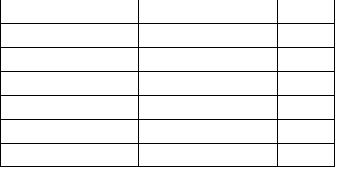- 您现在的位置:买卖IC网 > Sheet目录104 > OVTL09LG3WD (TT Electronics/Optek Technology)LED DAYLGHT WHT 10W 29.15MM ARR
Issue B.2 07/08
Page 12 of 14
OPTEK reserves the right to make changes at any time in order to improve design and to supply the best product possible.
OPTEK Technology Inc. — 1645 Wallace Drive, Carrollton, Texas 75006
Phone: (972) 323-2200 or (800) 341-4747 FAX: (972) 323-2396 visibleLED@optekinc.com www.optekinc.com
Lednium Series Optimal X
OVTL09LG3x Series
Typical elements in the conducting path and corresponding nominal thermal conductivities are:
Elements w/mK
Epilayers GaN/InGaN 150
Substrate Sapphire 50
Die attach material Conductive epoxy 10
Package Silver plated copper 350
Solder Solder (Sn/Ag/Cu) 35
Copper cladding Copper 300
Note : Thermal conductivity is a physical constant. For the materials above, the respective contribution each makes
to the overall thermal resistance (Rθ
j-b) is a function of the thickness of each material layer, and the surface area.
Thermal Conductivity (TC) is defined to be the heat conducted in time (t), through thickness (T) in a direction normal
to a surface area (A), due to a temperature difference (δT).
Therefore TC= q/t x {T/[A x
δT]}
and
δT = [Q x T]/[A x TC] where
δ
T = Temp. difference (K)
Q = Power (w)
A = Surface area (m
2)
T = layer thickness (m)
TC = Thermal Conductivity (w/mK)
Theoretical Calculation (for 1 watt dissipated in a cup product via a single 40mil die)
GaN Thickness approx 10 x 10-6
= 1 x 10x10
-6/ 10-6
x 150
Area 10
-6
= 0.07 K
Substrate T = 60 x 10-6
= 1 x 60x10
-6/ 10-6
x 50
= 1.2 K
Die attach T = 20 x 10-6
= 1 x 20x10
-6
/ 2x10
-6
x 10
A = 2 x 10
-6
= 1
Package T = 0.4x10-3
= 1 x 0.4x10
-3/ 6x10-6
x 350
A = 6x10
-6
= 0.19
Solder T = 60x10-6
= 1 x 60x10
-6/6x10-6
x 25
A = 6x10
-6
= 0.4
Total Calculated
δT = 2.86K




发布紧急采购,3分钟左右您将得到回复。
相关PDF资料
PD008D02517S51
DISPLAY PLASMA AVIONIC RADIO
PD009D02501S51
DISPLAY PLASMA AVIONIC RADIO
PD013D02502S51
DISPLAY PLASMA AVIONIC RADIO
PD020D02505S51
DISPLAY PLASMA AVIONIC RADIO
PD020D02507S51
DISPLAY PLASMA AVIONIC RADIO
PD029D02501S51
DISPLAY PLASMA AVIONIC RADIO
PDS1040CTL-13
DIODE SCHOTTKY DL 40V 5A PWRDI5
PDS1240CTL-13
DIODE ARR SCHTKY 40V 6A POWERDI5
相关代理商/技术参数
OVTL09LG3WW
功能描述:大功率LED - 白色 Warm White 3200K 230lm 1050mA RoHS:否 制造商:Cree, Inc. 照明颜色:Cool White 颜色温度:5000 K 光通量:280 lm 显示角:125 deg 正向电流:700 mA 正向电压:2.9 V 安装风格:SMD/SMT 系列:XMLBWW 封装:Reel
OVTL09LGAA
功能描述:大功率LED - 单色 Power Array Amber 595nm
RoHS:否 制造商:Cree, Inc. 照明颜色:Blue 波长:465 nm 光强度: 光通量/辐射通量:500 mW 正向电流:350 mA 正向电压:3.1 V 安装风格:SMD/SMT 功率额定值: 系列:XB-D 封装:Reel
OVTL09LGAA
制造商:TT Electronics / OPTEK Technology 功能描述:LED LAMP COLOR:AMBER
OVTL09LGAB
功能描述:大功率LED - 单色 Power Array Blue 467nm
RoHS:否 制造商:Cree, Inc. 照明颜色:Blue 波长:465 nm 光强度: 光通量/辐射通量:500 mW 正向电流:350 mA 正向电压:3.1 V 安装风格:SMD/SMT 功率额定值: 系列:XB-D 封装:Reel
OVTL09LGAB
制造商:TT Electronics / OPTEK Technology 功能描述:LED LAMP COLOR:BLuE
OVTL09LGAG
功能描述:大功率LED - 单色 Power Array Green 524nm
RoHS:否 制造商:Cree, Inc. 照明颜色:Blue 波长:465 nm 光强度: 光通量/辐射通量:500 mW 正向电流:350 mA 正向电压:3.1 V 安装风格:SMD/SMT 功率额定值: 系列:XB-D 封装:Reel
OVTL09LGAG
制造商:TT Electronics / OPTEK Technology 功能描述:LED LAMP COLOR:GREEN
OVTL09LGAM
功能描述:大功率LED - 多色 Power Array RGB Full Color
RoHS:否 制造商:Cree, Inc. 照明颜色:RGB, Cool White 波长/色温: 光强度: 系列: 封装:Reel
